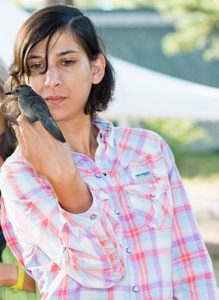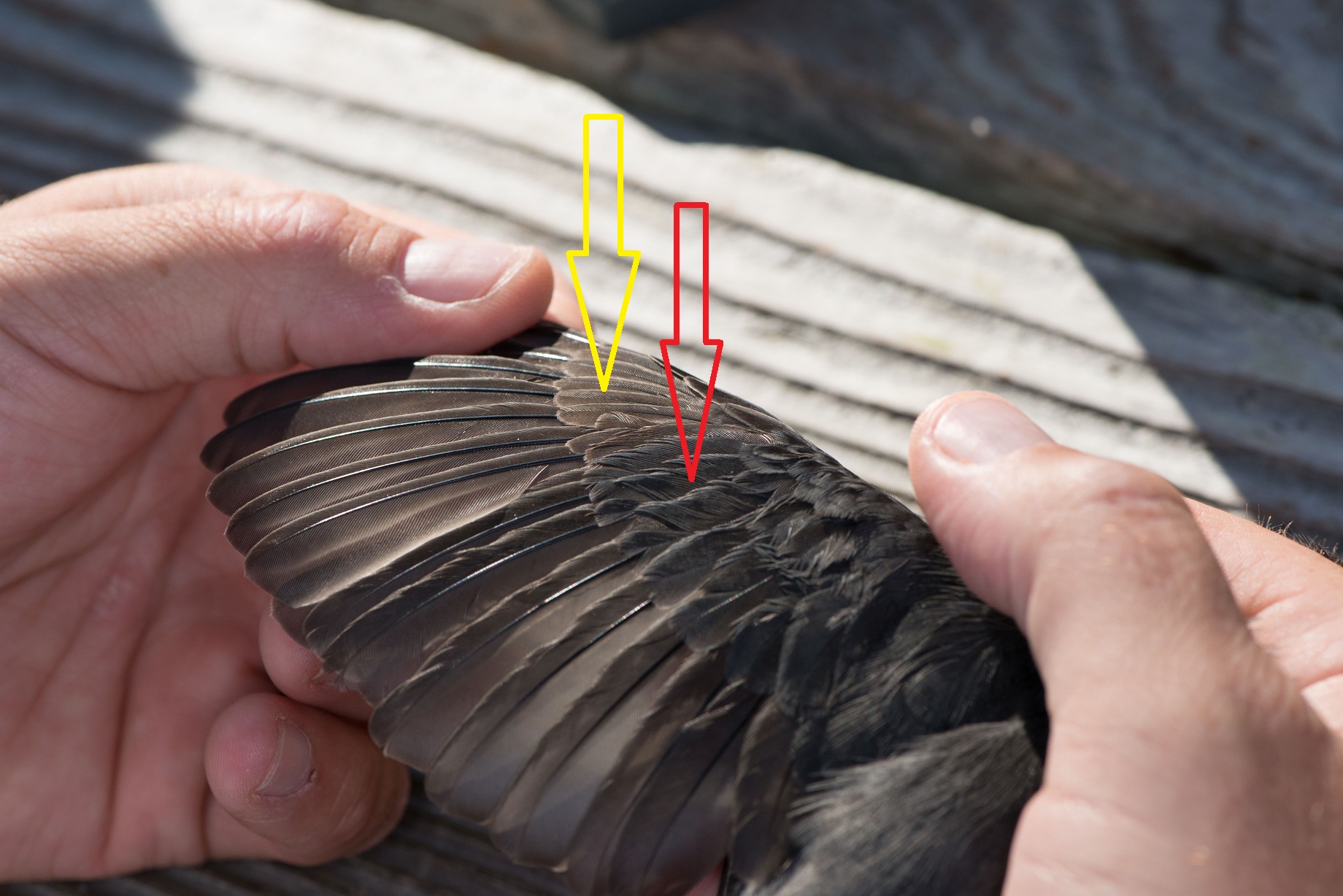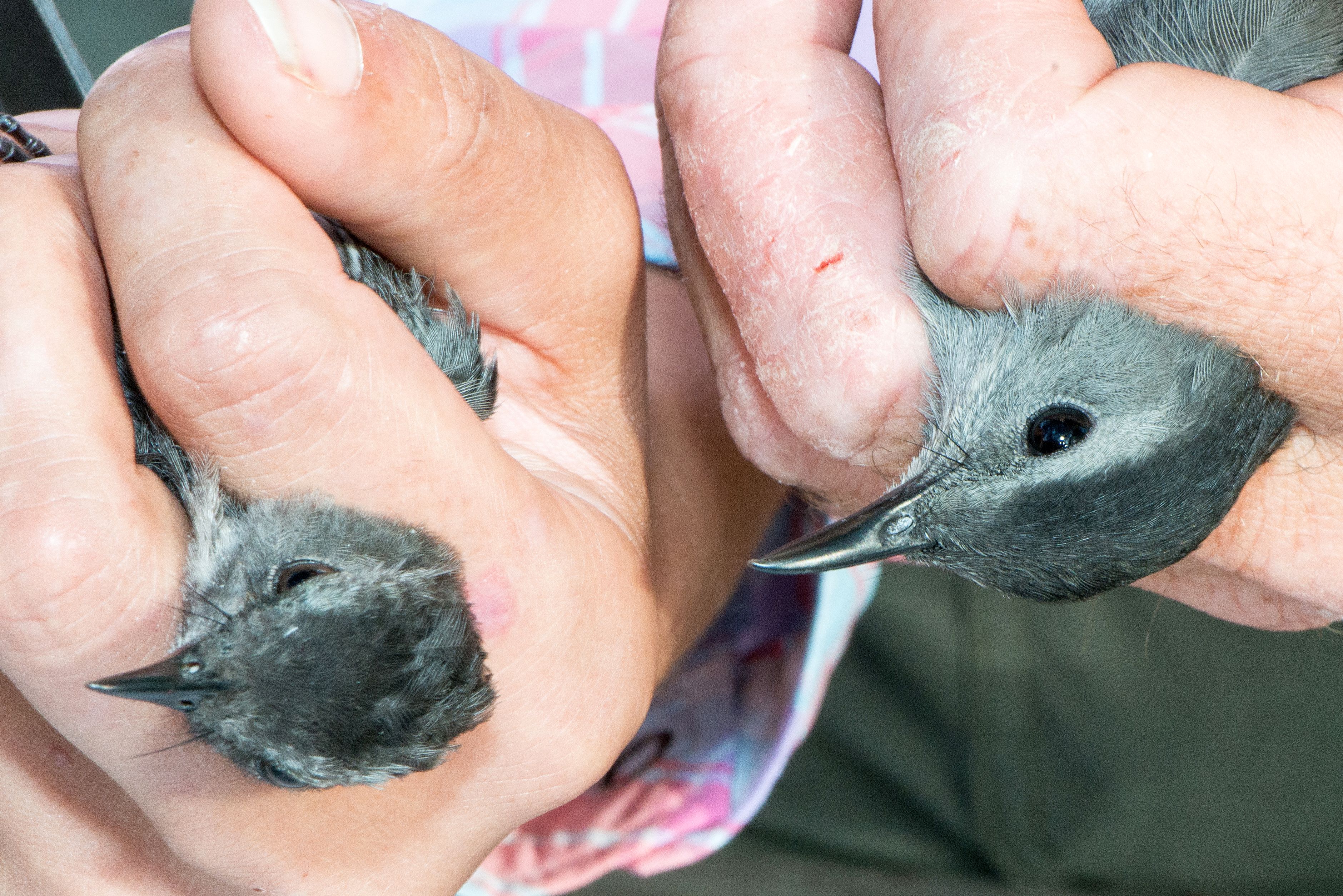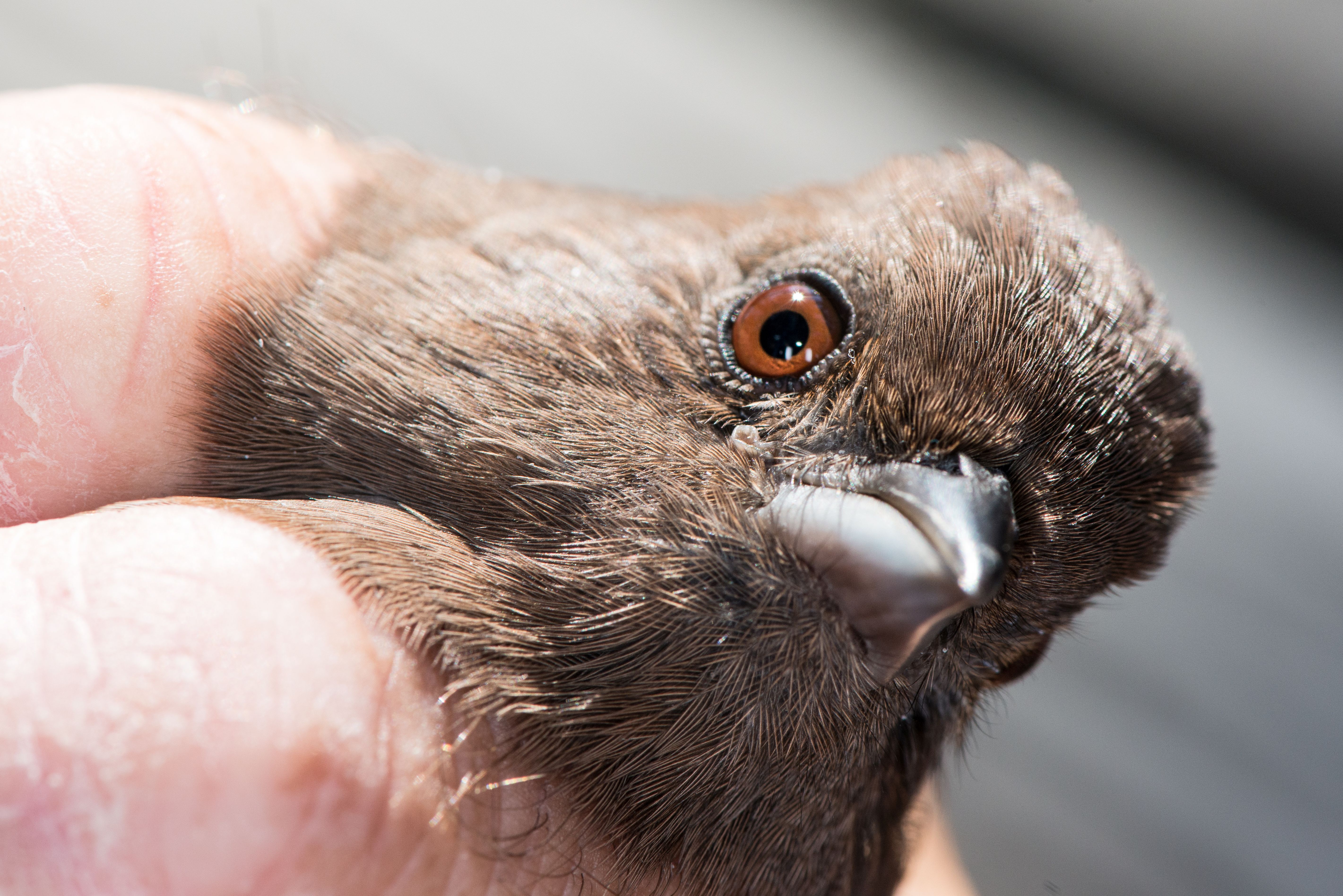Now that fall migration bird banding is under way, our banding demonstrations have resumed at 8 a.m. on Wednesday and Friday mornings through October.

Assistant bander Elora Grahame with catbird (Karen Strauss)
Seeing wild birds so close is an unforgettable experience. But what can you learn by watching banders at work?
Banding, a basic and time-tested form of bird research, collects data that tracks diversity and abundance of the species found at Wellfleet Bay. Along with weight and size, master bander James Junda and assistant Elora Grahame are also determining the ages of the birds they catch in the mist nets.
They catch a lot of young birds. We’ll explore the reasons for that in our next post, but we want to focus now on how they can tell a bird was born this summer or wasn’t.
It starts with feathers. Hatching year birds replace only certain feathers during their first fall. For the most part these birds do not replace the majority of their wing feathers, unlike adults that replace all of their feathers. Young birds do molt (or replace) their body feathers and also the feathers that cover the secondary wing feathers, called the secondary coverts. But generally they do not replace the secondary or primary wing feathers nor the feathers that cover the primaries, called the primary coverts.
A little confusing maybe, but all key signs for banders trying to age a bird.

Red arrow shows secondary coverts that have been replaced (they’re darker) versus the lighter colored ones (yellow arrow) that will molt next fall. (Karen Strauss)
The feather changes can seem very subtle. But a recent net run that produced both an adult and hatch-year Gray Catbird show distinct feather differences, especially on the undersides of these birds.

Can you guess which is the hatch year bird in this photo? (Karen Strauss)
Songbirds also have to grow adult-sized bills as you can see from a picture of the same birds.

Someone’s bill has a way to go before it’s a grown-up size. (Karen Strauss)
The eyes of a bird can be another sign of age. This young female towhee has lovely brown eyes. But an adult’s would be a striking red.

This hatch year female Eastern Towhee will have red eyes by this time next year. (Karen Strauss)
Catching a hatch year bird is very helpful because its age can be recorded accurately. Should the bird survive its first year and eventually be re-captured elsewhere, the recorded data allows researchers to know how long that individual has been alive. With adult birds, there’s no way to know what year they were born and their longevity is only a guess.
Our thanks to Karen Strauss for bringing her great photography talents and the dedication she’s regularly demonstrated with horseshoe crabs, diamondback terrapins, sea turtles, and necropsies to the world of bird banding!

